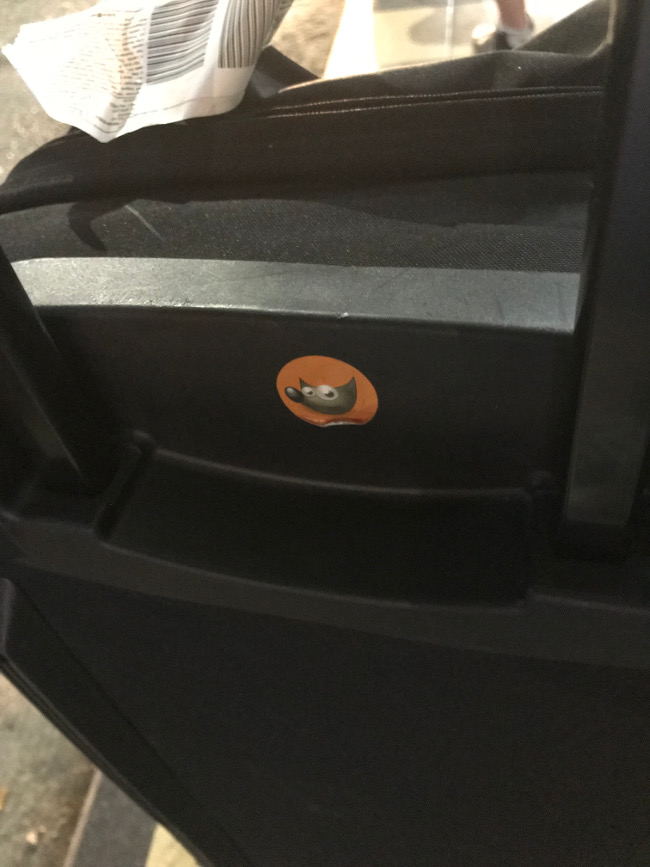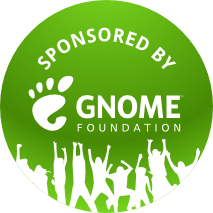The Recipes application started as a celebration of GNOME’s community and history, and it’s grown to be a great showcase for what GNOME is about:
- design guidelines and attention to detail
- a software development platform for modern applications
- new technologies, strongly integrated with the OS
- people-centered development
Additionally, Recipes has become a place where to iterate design and technology for the rest of the GNOME applications.
Nevertheless, while design patterns, toolkit features, Flatpak and portals, are part of the development experience, without content provided by the people using Recipes there would not be an application to begin with.
If we look at the work Endless has been doing on its own framework for content-driven applications, there’s a natural fit — which is why I was really happy to attend the Recipes hackfest in Yogyakarta, this week.
Fried Jawanese noodle make a healty breakfast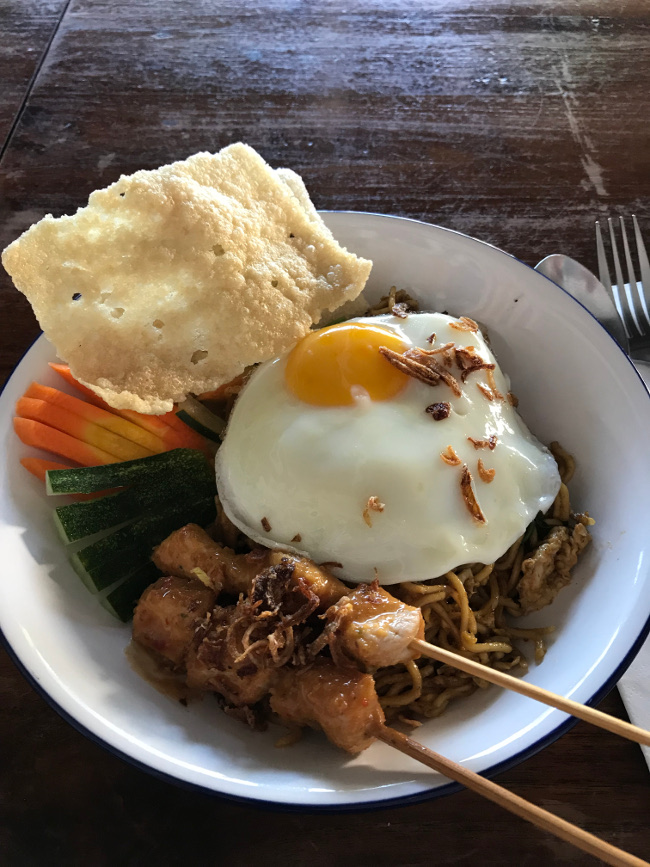
In the Endless framework we take structured data — like a web page, or a PDF document, or a mix of video and text — and we construct “shards”, which embed both the content, its metadata, and a Xapian database that can be used for querying the data. We take the shards and distribute them though Flatpak as a runtime extension for our applications, which means we can take advantage of Flatpak for shipping updates efficiently.
During the hackfest we talked about how to take advantage of the data model Endless applications use, as well as its distribution model; instead of taking tarballs with the recipe text, the images, and the metadata attached to each, we can create shards that can be mapped to a custom data model. Additionally, we can generate those shards locally when exporting the recipes created by new chefs, and easily re-integrate them with the shared recipe shards — with the possibility, in the future, to have a whole web application that lets you submit new recipes, and the maintainers review them without necessarily going through Matthias’s email. 😉
The data model discussion segued into how to display that data. The Endless framework has the concept of cards, which are context-aware data views; depending on context, they can have more or less details exposed to the user — and all those details are populated from the data model itself. Recipes has custom widgets that do a very similar job, so we talked about how to create a shared layer that can be reused both by Endless applications and by GNOME applications.
Sadly, I don’t remember the name of this soup, only that it had chicken hearts in it, and that Cosimo loved it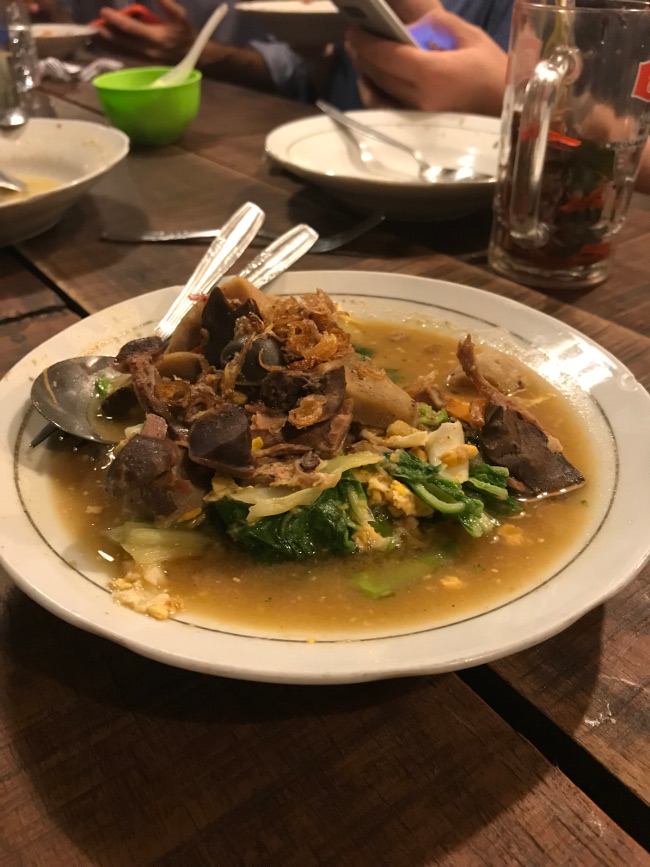
At the end of the hackfest we were able to have a proof of concept of Recipes loading the data from a custom shard, and using the Endless framework to display it; translating that into shareable code and libraries that can be used by other projects is the next step of the roadmap.
All of this, of course, will benefit more than just the Recipes application. For instance, we could have a Dictionary application that worked offline, and used Wiktionary as a source, and allowed better queries than just substring matching; we could have applications like Photos and Documents reuse the same UI elements as Recipes for their collection views; Software and Recipes already share a similar “landing page” design (and widgets), which means that Software could also use the “card” UI elements.
There’s lots for everyone to do, but exciting times are ahead!
And after we’re done we can relax by the pool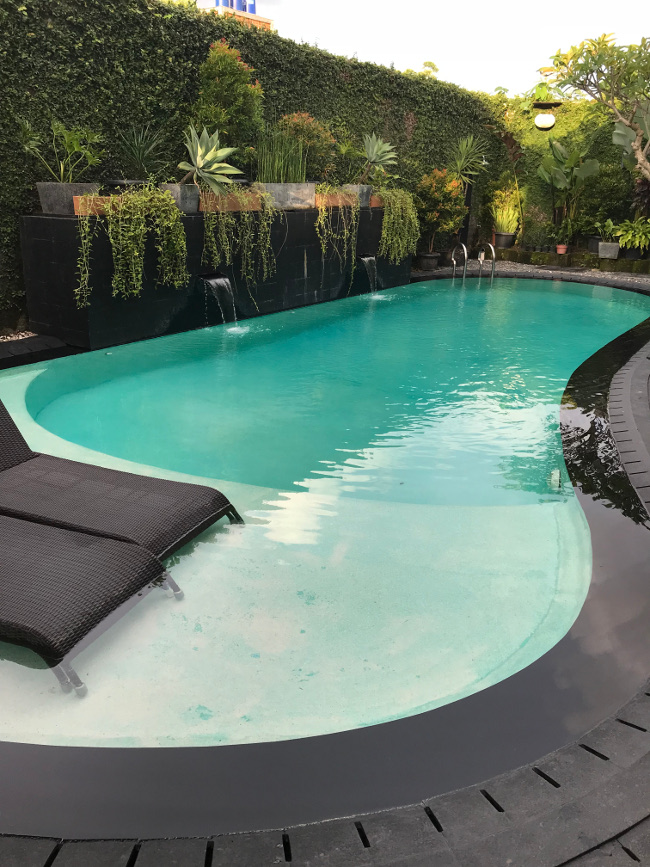
I’d be remiss if I didn’t thank our hosts at the Amikom university.
Yogyakarta is a great city; I’ve never been in Indonesia before, and I’ve greatly enjoyed my time here. There’s lots to see, and I strongly recommend visiting. I’ve loved the food, and the people’s warmth.
I’d like to thank my employer, Endless, for letting me take some time to attend the hackfest; and the GNOME Foundation, for sponsoring my travel.
The travelling Wilber